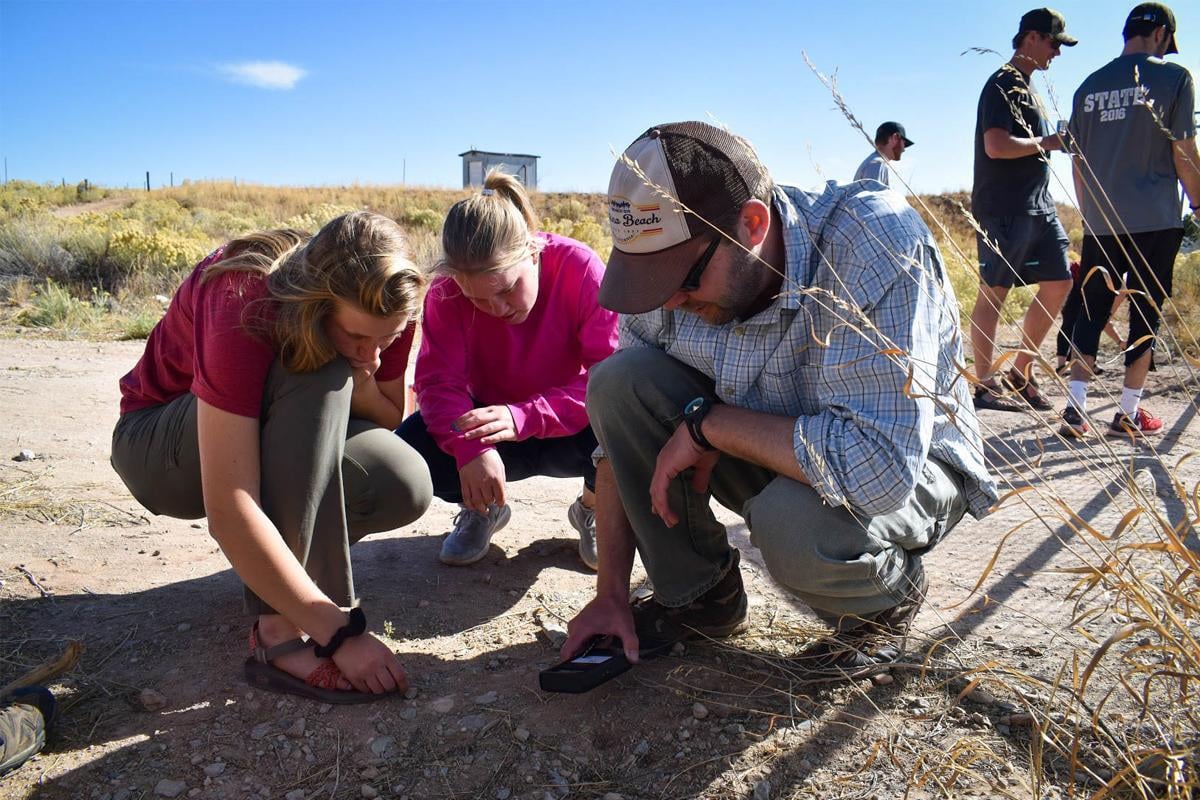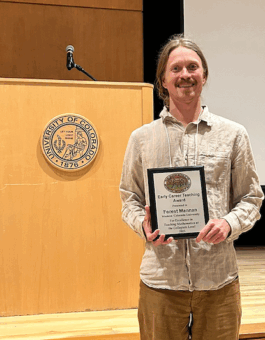When earth scientists try to understand past climates they often look to lakes, ice cores or ocean sediments. These deposits have clear, easily identifiable layers that they can date by using carbon-14 (14C) in organic materials preserved in the layers. However, deserts typically do not have much preserved organic material, so paleoclimatic records from deserts are less common. This means earth scientists have a major spatial gap in their understanding of the climate of Earth’s recent past.
The Research Team
A collaborative team from Western Colorado University and University of Utah set out to fill that knowledge gap. Western’s David Marchetti, PhD. and Amy Ellwein, PhD., plus six undergraduate research assistants and Utah’s Thure Cerling, PhD. and Diego Fernandez, PhD., examined desert soils near Capitol Reef National Park in central Utah. Three years of funding from the National Science Foundation supported the research.
Desert Soil Science
Many deserts do have one type of deposit known as soil carbonate rinds or pendants, sometimes referred to as caliche or hardpan. These rinds are small, usually a few centimeters or less and have very clear layers that can be dated using 14C on the carbon in the calcium carbonate. When calcium and bicarbonate in soil water combine, they form calcium carbonate as the soil water evaporates and carbon dioxide degasses due to plant root respiration.
The Western and Utah research team took long-term measurements of soil CO2, soil temperature, and soil moisture near Capitol Reef National Park that indicate the soil carbonate forms in the late spring to late summer with evaporating soil water as the primary driver.
The Team’s Findings
When looking at the records in the rinds they found:
- The carbon isotope ratios are determined by the types of vegetation that are respiring CO2 into the soil, which indicate the type the surface plant communities (grasses vs. shrubs, vs. trees), while
- The oxygen isotope ratios indicate the source of warm-season rains, typically late spring frontal storms or late summer monsoonal rains.
Once researchers date the rind layers and measure the stable isotope ratios of C and O in the rind carbonate, they can reconstruct an estimated timeline of paleovegetation as well as the strength of the summer monsoon. The team created paleoclimate records from several rinds in their field site with great results.
Published Results
The results of one rind were recently published in the prestigious, peer-reviewed geochemistry journal Geochimica et Cosmochimica Acta. The team found that during the last ice age about 20,000 years ago, the vegetation communities were mostly stable while the rainfall sources changed frequently. More desert-like vegetation came into the site at the end of the last ice age around 14,000 years ago and there were major changes in both vegetation and rainfall about 6,000 years ago.
Now the Western-Utah team looks to further develop these methods. Currently, they are working with researchers from University of Michigan as well. Marchetti hopes to fund several more Western student researchers.
“The opportunity that this research gave Western was amazing. The Western students got to work in the field, travel to the University of Utah, learn new analytical techniques and make valuable contributions to this new methodology. It was a transformative experience for them,” Marchetti said.
Breaking New Grounds
Interested in learning more about research projects like this? Check out Western’s environmental geology program.
Photo Credit: Erin Blair


